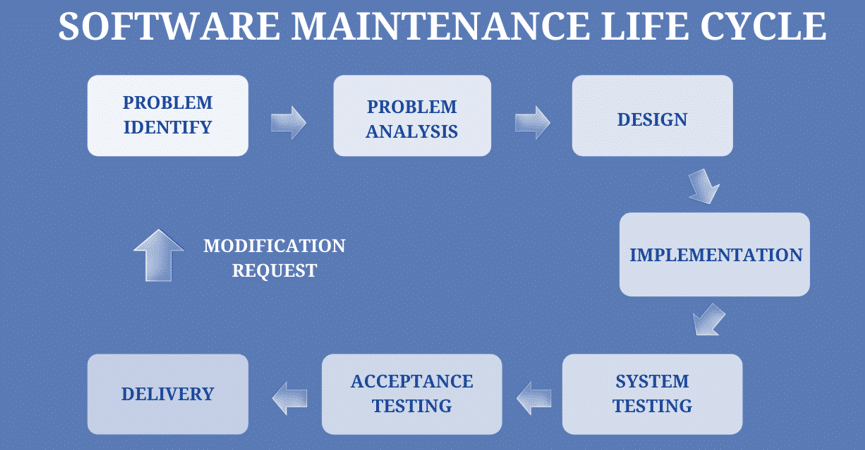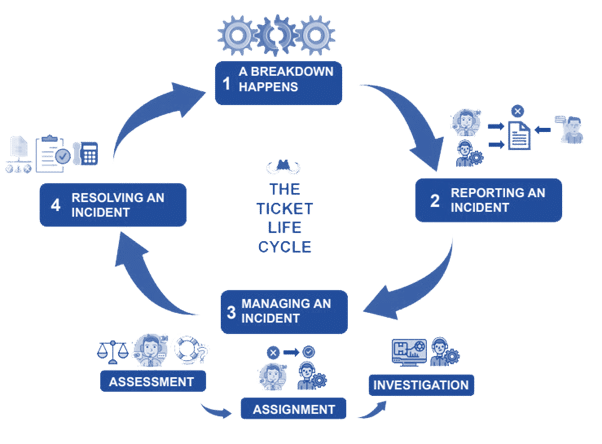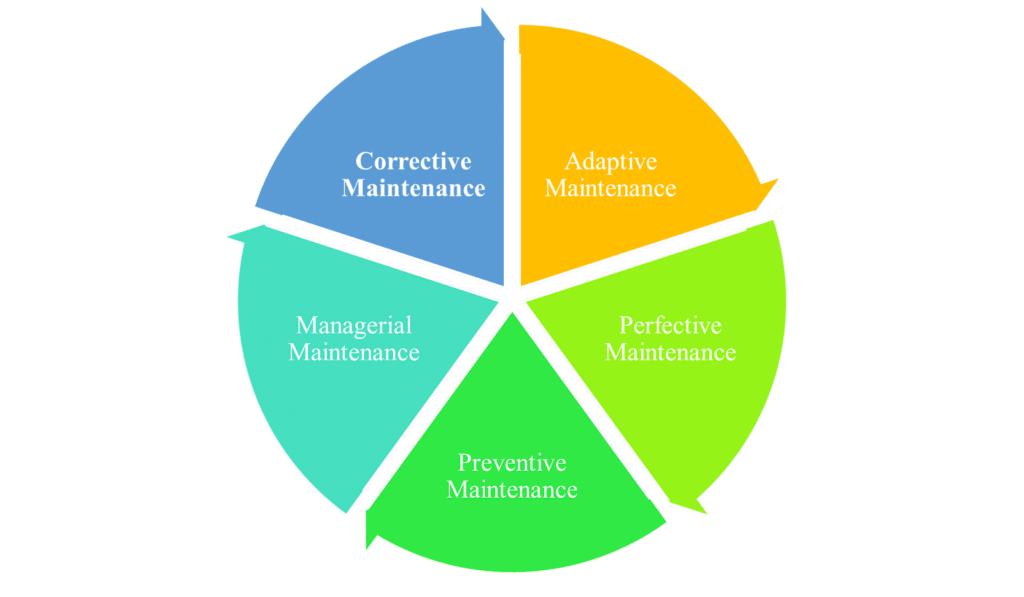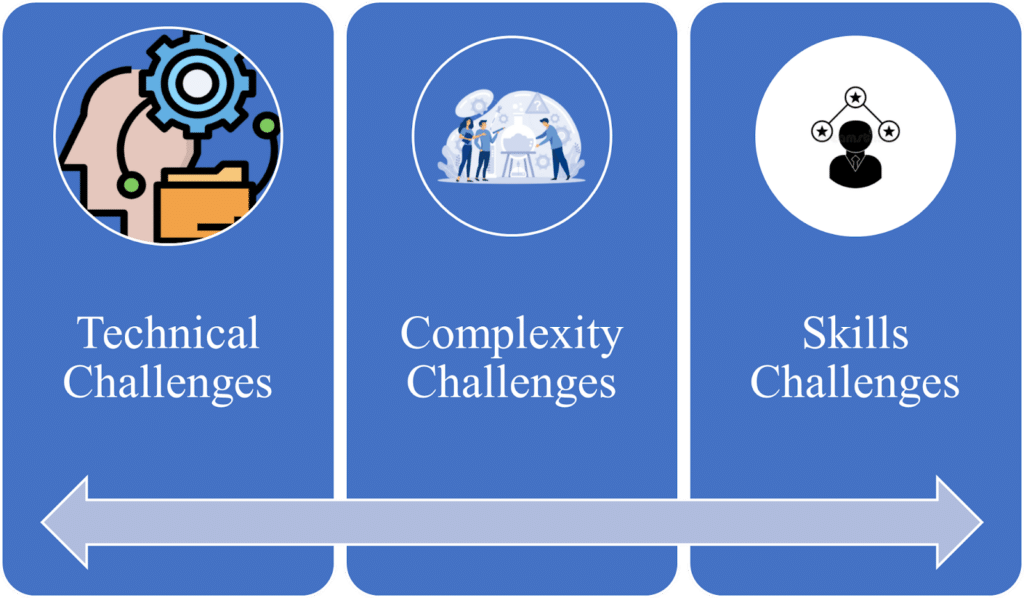Understanding Software Maintenance: What it is and Why it Matters?
If you are running any enterprise or any startup then you cannot deny the fact that the majority of your business operations run through software and applications. So, to keep your software and applications optimized you need software maintenance and support services.

According to the official business statistics generated by Fortune Business Insights – the market of predictive maintenance will reach a market value of $18,551 million by the year 2028. Expected growth of the software maintenance market at a CAGR of 29.8% from 2022 to 2028.
What is Software Maintenance?
The software maintenance process refers to modifying and updating a deployed, in-use software system. The purpose of software maintenance is to keep the software functional, secure and efficient over time. Software support and maintenance are critical components of the software development life cycle as they can help improve the overall quality of the software, fix bugs and security vulnerabilities and add new features.

In fact, a study by the Gartner Group estimates that the cost of fixing a defect increases by a factor of 10 if it is not addressed until after the software is deployed. Software maintenance can be a time-consuming and expensive process, but it is essential for ensuring that software continues to meet the needs of its users over time. According to a recent study, software maintenance accounts for around 70% of the total cost of software ownership over its lifetime.
Software support and maintenance is a continuous process that begins after the initial release of a software product and lasts throughout its entire lifecycle. The purpose of software maintenance is to correct faults, improve performance, and extend the life of a software system. It is a myth that the cost of software maintenance can often be higher than the initial cost of developing the software, as it requires ongoing resources and expertise.
Why Software Maintenance is Required?
In the past, a huge proportion of business owners were not convinced regarding – whether they should keep retention money for software maintenance or they should prepare retention funds for software maintenance.
Now, majority of the companies begin to understand the importance of software support. Below are certain traits related to software maintenance services:
- Bug Fixes: Software systems are not perfect and may contain bugs and errors that can affect their functionality. Software maintenance helps to identify and fix these bugs, ensuring that the software continues to work as intended.
- Security Updates: As new security threats emerge, software systems may need to be updated to address vulnerabilities and protect against hacking, malware, and other security threats.
- New Features and Enhancements: Users request new features/functionality or existing features that need improvement. Software maintenance provides a mechanism for incorporating these changes into the software.
- Compatibility: Software updates needed for new hardware/software environments or compatibility with other systems.
- Performance Optimization: Software systems may become slow or inefficient over time as they are used. Software support can help to identify and resolve performance issues, improving the overall user experience.
- Legal Compliance: Software systems may need to be updated to comply with new laws, regulations, or industry standards.
Types of Software Maintenance

Let’s understand the different types of software maintenance that can enhance your business development process in an effective way.
Corrective Maintenance: Corrective maintenance is performed to fix faults and errors in the software system. It is essential for maintaining the reliability and stability of the software and ensuring that it works as intended. This type of maintenance is usually performed after the software has been deployed and is in use.
Adaptive Maintenance: Adaptive maintenance modifies the software to accommodate changes in the environment. This type of maintenance helps to keep the software relevant and up-to-date.
Perfective Maintenance: Perfective maintenance is performed to improve the software system’s performance and functionality. This type of maintenance may involve adding new features, optimizing existing functionality, or improving usability. Ongoing perfective maintenance performed throughout the software development life cycle.
Preventive Maintenance: Preventive maintenance is performed to prevent potential problems with the software system. It involves regular checks, updates, and backups to optimize software function and minimize problem risk. Essential for software stability and reliability.
Managerial Maintenance: Managerial maintenance manages the maintenance process, updates, and records to an efficient and effective process. This type of maintenance is essential for ensuring the overall health and maintenance of the software system.
Challenges in Software Maintenance

Like every other process, the application maintenance and support process incorporates different factors which can hindrance in the process. So, to reduce the probability of challenges – it is crucial that you can gain a detailed understanding of all the relevant measures that you need to undertake.
- Technical Challenges: Maintaining older software systems can be challenging due to outdated technology and a lack of documentation.
- Cost Challenges: Organizations face high costs for software maintenance, especially for older systems with limited budgets.
- Complexity Challenges: Software systems can become complex over time, making it difficult to perform maintenance and implement changes.
- Changing Requirements: The requirements of software users can change over time, requiring ongoing maintenance to accommodate these changes.
- Skills Challenges: Maintaining software requires specialized skills, and it can be challenging to find and retain skilled personnel.
Effective software maintenance requires careful planning, resources, and expertise to overcome these challenges. Organizations must prioritize and allocate resources for software maintenance to ensure the longevity and effectiveness of their software systems.
Although, while evaluating the development process of the software – you will encounter various real-time errors or bugs.
Automated Testing
- Code coverage: Code coverage measures the percentage of the code that is covered by automated tests. A higher code coverage indicates that a larger portion of the code has been tested and is less likely to contain bugs.
- Pass/fail rate: The pass/fail rate is the ratio of tests that pass to tests that fail. A high pass/fail rate indicates that the tests are effective in finding bugs and that the software is of high quality.
- Test execution time: The test execution time measures the time it takes to run all of the tests.
- Defect density: Defect density measures the number of bugs found per unit of code. A lower defect density indicates that the software is of higher quality and that the automated tests are effective in finding bugs.
- False positive and false negative rate: The false positive and false negative rate measures the accuracy of the tests. A high false positive rate indicates that the tests are generating false alerts, while a high false negative rate indicates that the tests are not catching real bugs.
- Root cause analysis: Root cause analysis involves identifying the underlying cause of bugs and defects. This can help determine if the issue is due to a problem with the code or a problem with the tests.
These measures can help evaluate the effectiveness of automated testing and identify areas for improvement. However, it’s important to keep in mind that no single measure can provide a complete picture of the quality of the software or the tests, and a combination of measures should be used to get a more complete understanding.
Tools for Software Maintenance Process
Utilize the below tools for the software maintenance functions to enhance the productivity of your process. At the time of your app development and software development process, you can utilize these tools so they will enhance your productivity and value.
Redmine
It also integrates with version control systems, such as Git and SVN, to provide a comprehensive solution for software maintenance. Redmine also supports a wide range of plugins and customization options, making it a flexible and adaptable tool for software maintenance.
Apache Subversion (SVN)
Apache Subversion (SVN) is an open-source version control system that provides a robust and scalable solution for managing and tracking changes to software code. SVN provides a centralized repository for code, allowing developers to manage and track changes to the codebase over time. It also supports a wide range of tools and integrations, making it a flexible and adaptable tool for software maintenance.
IBM Rational ClearCase
Comprehensive version control and configuration management system with software development and maintenance tools. ClearCase provides a centralized repository for code, allowing developers to manage and track changes to the codebase over time. It also provides tools for issue tracking, configuration management, and integration with other tools and systems.
Read more: End-To-End User Testing Complete Guide & Frameworks
Visual Studio
It is a popular Integrated Development Environment (IDE) developed by Microsoft. Visual Studio provides a comprehensive set of tools for software development and maintenance, including version control, issue tracking, and debugging tools. It also supports a wide range of programming languages and platforms, making it a flexible and adaptable tool for software maintenance.
Eclipse
Eclipse also supports a wide range of plugins and customization options, making it a highly customizable tool for software maintenance.
Some Fun Facts Related to the World of Software & Programming
- There are almost 700 programming languages in the world.
- The most disliked programming languages are as follows – Perl, Delphi and VBA.
- Father of modern-day computer science “Alan Turning (born on 23rd June 1912) ended world war II with programming-based mathematical calculations.
- “FORTRAN” was the 1st programming language.
Read more about: Continuous Testing: How to Implement it in Your Development Cycle
Conclusion
Documentation, testing, and version control practices can help minimize the impact of software changes and simplify the maintenance process. In order to provide effective software maintenance and support, organizations must have a clear understanding of their customer’s needs and the goals of the software system.
For verified and reliable software maintenance services – Amplework holder prowess into various technicalities and functionalities to help you in detecting bugs and taking corrective measures in advance.



 sales@amplework.com
sales@amplework.com
 (+91) 9636-962-228
(+91) 9636-962-228





